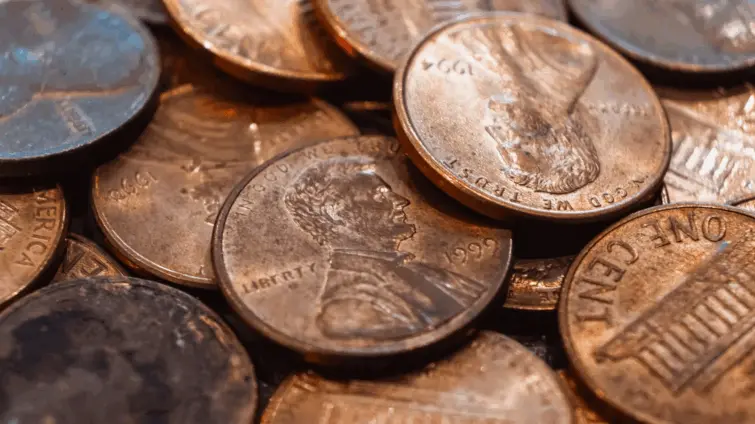The Ghana gold sector has recently reported a surge in exports, reaching a notable $897.6 million in April 2025, according to the Ghana GoldBoard (GoldBod). This upswing follows the allocation of a $279 million revolving fund intended to bolster small-scale mining operations. However, this development raises questions: How could a $279 million investment result in nearly $900 million in exports within a single month? Is this a genuine economic boom, or are other factors at play? According to financial experts like Prof. Isaac Boadi, the apparent increase warrants a closer examination. The question remains: how did Ghana gold exports experience such a dramatic increase?
The surge prompts investigation into potential explanations. Is this a statistical anomaly, or does it reflect a more complex interplay of financial mechanisms? This article delves into the details, exploring the factors that might contribute to this seemingly disproportionate growth in Ghana gold exports.
April 2025 saw Ghana gold exports reach $897.6 million, marking a significant increase. This came after a $279 million revolving fund was introduced to aid small-scale miners. The fund was managed by GoldBod. The central question is: How did such an investment lead to such a large export value in a short timeframe?
“The numbers defy simple logic,” – Prof. Isaac Boadi, Dean, Faculty of Accounting and Finance, UPSA and Executive Director, IERPP.
April’s gold production figures reveal a total export volume of 9,295 kilograms (9.295 tonnes). This represents an 80% increase compared to previous months, which averaged around $500 million. The $279 million revolving fund was earmarked to purchase 3 tonnes per week, culminating in 12 tonnes per month, from small-scale miners. However, the numbers don’t align. The 9.295 tonnes exported in April falls short of the promised 12 tonnes, leaving approximately 2.7 tonnes unaccounted for. Using the entire $279 million fund at prevailing market rates ($96,560/kg) should only yield around $289.7 million in gold production and exports, far from the reported $897.6 million.
The discrepancy of approximately $600 million between the expected and actual export value invites speculation. Several possibilities could explain this gap. The first potential source of the extra income may be the contributions of the major mining firms. Perhaps these firms significantly increased their exports in April, overshadowing the impact and obscuring the true effect of the revolving fund.
Another possibility revolves around the role of the private sector. Did GoldBod mix its purchases with privately exported gold, artificially inflating the export figures for the month? This would certainly explain the discrepancy, although without detailed figures, this is difficult to confirm.
A further possibility involves exchange rate dynamics. Could a sharp depreciation of the cedi inflate the dollar earnings, while masking a stagnation in actual gold production and export volume? The financial analysis depends on separating the impact of exchange rates from the actual increases in mining output.
“If $279 million magically turns into $897.6 million, either Ghana has discovered financial Magic or the numbers are misleading.”
The mechanics of a revolving fund dictate that money is recycled: gold is purchased, sold, and the proceeds are reused. It is difficult to see how the fund alone could explain such a significant increase in Ghana gold exports. In fact, a revolving fund should more or less maintain the same amount of value that it started with, and should be unlikely to double or triple its value.
The Finance Minister, Dr. Cassiel Ato Forson, has hailed the revolving fund as a game-changer for the gold production sector, a claim that seems to be at odds with the financial analysis from various sources.
The substantial discrepancies in export figures raise serious questions about transparency and accountability. Unless the government provides a clear breakdown of the contributions to the $897.6 million, the export volume discrepancy, and the current status of the revolving fund, the “historic” gold production boom risks being perceived as a statistical illusion, or worse.
Several questions remain. Who contributed to the $897.6 million in Ghana gold exports? Why is the export volume below the promised 12 tonnes? And is the revolving fund already depleted?
In conclusion, the extraordinary surge in Ghana gold exports in April 2025 demands further scrutiny. Although Dr. Cassiel Ato Forson praises the revolving fund, the figures suggest a deeper issue, warranting a thorough and transparent investigation. Clarity is needed on the source of the additional $600 million, the contribution of large-scale miners, and the fund’s current state. A transparent audit is vital to ensure accountability and to maintain confidence in Ghana’s gold production. Addressing these concerns and shedding light on the real factors driving Ghana’s gold exports will be crucial for sustaining trust and stability in the sector. It’s time for GoldBod to address these concerns and provide a clear picture of the real factors driving Ghana gold exports.
Image Source: MYJOYONLINE




















